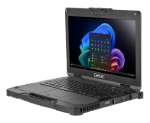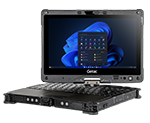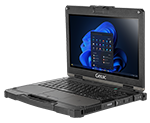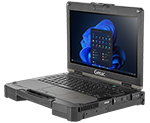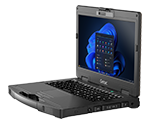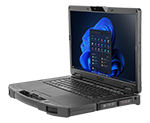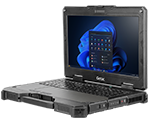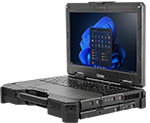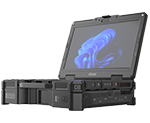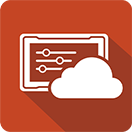Electronic Patient Care Record (ePCR) | Definition, Benefits & Trends
Electronic Patient Care Record (ePCR), a crucial aspect in the realm of ePCR medical technology, also called Electronic Patient Care Reporting in the US, is a digital solution that has transformed how emergency medical services (EMS) and other users document and share information about patient care.
What is an Electronic Patient Care Record (ePCR)?
Electronic Patient Care Record (ePCR), also referred to as Electronic Patient Care Reporting in the US, provides a digital solution that has revamped the way emergency medical services (EMS) and other entities document and share information about patient care. The ePCR definition encapsulates its role in streamlining the process of recording patient data during emergency responses.
It replaces traditional paper forms, signatures, and manual data entry processes with a streamlined system that captures, stores, and shares patient data, including medical history records, witness statements, call records, and treatment decisions. For those wondering what is epcr, it essentially marks a significant leap towards digitization in patient care reporting, emphasizing efficiency and accuracy.
The Role of ePCR in Public Safety and Ambulance Services
In the public safety industry, particularly in ambulance services, ePCR is pivotal. It enhances the efficiency and accuracy of patient care reporting, and importantly, it aids in informed decisions during critical moments by providing real-time access to comprehensive patient information.
The concept of an emergency patient care record is fundamental in modern EMS. It ensures that during emergencies, all relevant patient data is immediately available to responders, leading to more effective and timely medical interventions.
This immediate access can make all the difference in emergency situations where response times and accurate information are essential, highlighting the epcr meaning in the realm of emergency medical response and care.
How Emergency Uses Getac UX10-IP in Patient Data Collection
Due to its robust, resistant construction even under intensive disinfection and cleaning, the #ully rugged Getac UX10-IP tablet is predestined for emergency services.
Benefits of ePCR Systems
Improved Patient Care

ePCR systems provide real-time access to patient information, significantly improving the quality of patient care. By enabling seamless communication and collaboration among EMS, fire departments, and hospitals, these systems ensure continuity of care and epcr system record retention, allowing medical professionals to examine patient details and make treatment decisions in a timely and informed manner.
Operational Efficiency

Switching from traditional paper forms to an electronic patient care record system increases efficiency in many ways. These systems streamline the process of documentation and data entry, thereby reducing errors. Furthermore, they offer remote file access and data synchronization, allowing EMS and other users to access patient information whenever and wherever it's needed.
Compliance and Quality Improvement

Adherence to documentation standards and quality of care are critical factors in healthcare. ePCR systems not only ensure compliance with these standards but also foster data-driven decision-making. By facilitating the collection and analysis of patient data, these systems support benchmarking and performance monitoring, leading to increased efficiency, informed decisions, and continuous quality improvement.
In the realm of health EMS, ePCR serves as a cornerstone technology. It provides EMS professionals with a comprehensive tool for recording and accessing patient data, enhancing the overall efficacy of emergency medical services.
Components of and Key Features of ePCR Systems
Hardware Components and Integration
ePCR systems utilize hardware such as mobile devices, which provide connectivity options, software, and accessories to help EMS professionals access and share information in real-time.
A prime example is the Getac UX10-IP. Designed with infection prevention in mind, this device comes complete with sealed buttons, allowing frequent cleaning and supporting the health and safety of medical professionals. Importantly, Getac’s devices integrate seamlessly with ePCR software, ensuring an efficient process from data collection and entry to management and reporting.
DESIGNED FOR INFECTION PREVENTION
Designed with Infection prevention in mind, the UX10-IP is available with sealed buttons allowing frequent cleaning to support infection prevention of medical healthcare professionals.

UX10-IP
Tablets | Fully Rugged | 10.1-Inch | Windows
Sealed front buttons ensure easy cleaning to support infection prevention of medical healthcare professionals.
Software Components and Key Features
The software components of an ePCR system include ePCR applications, ambulance software integration with other healthcare systems, and data storage and management. The software ensures better accuracy and quality of data while providing security for sensitive patient information.
Key features of ePCR systems include efficient data collection, file entry and documentation, data validation and error prevention mechanisms, and comprehensive reporting, search, and analytics capabilities. Additionally, the systems offer interoperability and integration, enabling organizations to seamlessly connect and share information across multiple platforms.
ePCR software record retention is a key aspect, ensuring that all patient data is securely stored and easily retrievable for future reference. This is essential for maintaining records over time and for auditing purposes.
Related solutions

Getac deployXpress®
Software | Android
This cloud-based solution streamlines the deployment, configuration, provisioning, and over-the-air updating of Getac Android devices.

Device Monitoring System
Software | Windows
GDMS tracks and monitors deployed devices, spotting potential device issues, before they impact on your field-based workforce.

Getac KeyWedge Barcode Reader Utility
Software | Windows
Scan barcode data into your application with the devices in-built rear camera. No hardware. No upgrades. No SDK integration required.
Future Trends and Innovations
Wearable Devices and the Internet of Medical Things (IoMT)

The next frontier in ePCR is the incorporation of innovative technologies such as wearable devices and the Internet of Medical Things (IoMT). Wearable devices, which are growing increasingly sophisticated and user-friendly, can monitor vital signs, track patient movement, and even measure brain electrical activity, as demonstrated by Bittium BrainStatus™.
The IoMT, on the other hand, refers to a network of medical devices and software applications that connect to healthcare IT systems through online networks. The interoperability and connectivity offered by the IoMT will allow seamless sharing and analysis of data collected from a myriad of devices and sources.
This could be especially helpful and beneficial in emergency medical service settings, where the fast and accurate collection and transmission of patient data can significantly impact response times and treatment decisions.
Integration with Telemedicine and Remote Consultation

Integration with telemedicine software and remote consultation platforms is another trend shaping the future of EPCR systems. This evolution will further enhance the efficiency and reach of emergency medical service providers, allowing them to extend care to patients irrespective of their location.
Advanced Analytics and Artificial Intelligence (AI)

ePCR systems are also set to benefit from advancements in advanced analytics and artificial intelligence (AI). These technologies will enable a more precise analysis of patient data, leading to more informed treatment decisions, increased efficiency of resources, and better patient outcomes.
Interconnected Healthcare Systems and Data Sharing

The healthcare industry is moving towards more interconnected systems and greater data sharing, both internally and with other organizations. ePCR systems play a critical role in this transition, facilitating seamless integration with electronic health records and other healthcare systems. This interconnectedness will enhance patient care by providing a comprehensive view of patient information, thereby enabling more accurate and timely treatment decisions.
Conclusion
Electronic Patient Care Record (ePCR) systems have revolutionized how patient care is documented and shared in the public safety industry, especially in ambulance services. By providing real-time access to patient information, these systems improve patient care, increase operational efficiency, and support compliance and quality improvement.
The importance of ePCR systems in modern healthcare cannot be overstated. The ability of emergency medical services to accurately record, share, and access patient data in real-time is critical to making informed treatment decisions and improving patient outcomes. Additionally, the need for reliable and durable mobile devices such as Getac’s offerings is integral to supporting ePCR applications and ensuring seamless integration with existing systems and processes in ambulance services.
By replacing paper forms with electronic patient care reports, healthcare providers can improve accuracy and efficiency while reducing errors and ensuring compliance with documentation standards. This not only benefits patients but also the EMS providers, hospitals, and other users who rely on these systems to provide high-quality care.
Additional resources

Flexing Safety First Muscles in Times of Crisis

South Central Ambulance Service: Digitally transforming urgent patient care with the Getac UX10-IP fully rugged tablet

6 Reasons to Use Rugged Devices for Ambulance Services

